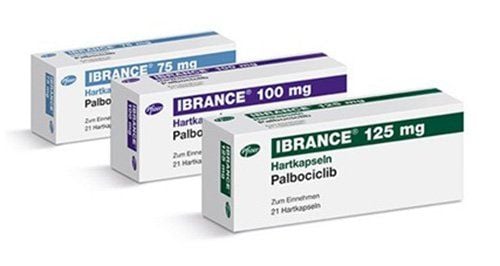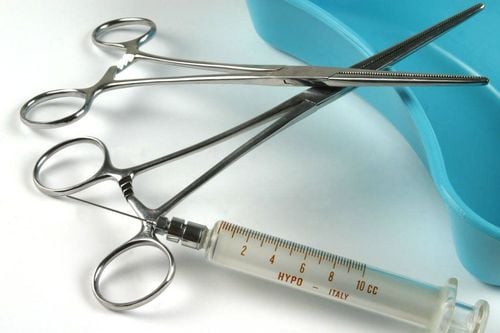This is an automatically translated article.
The article was professionally consulted by Master, Resident, Specialist I Trinh Le Hong Minh - Department of Diagnostic Imaging - Vinmec Central Park International General HospitalMammary calcifications are small patches of calcium that appear on mammograms as bright white spots or dots against the soft tissue background of the breast. This is because calcium readily absorbs X-rays during a mammogram. Calcification usually does not show up on ultrasound and never shows up on MRI of the breast.
1. Causes of mammary gland calcification
Sometimes calcifications are a sign of breast cancer, such as adenocarcinoma in situ (DCIS), but most calcifications are caused by noncancerous (benign) conditions. Possible causes of breast calcification include:Breast cancer Breast cyst Cellular secretions or debris Ductal carcinoma in situ (DCIS) Fibrocystitis Tubal inflammation History of previous trauma or breast surgery Cancer treatment with radiotherapy Calcification of the skin or blood vessels. Products that contain radioactive materials or metals, such as deodorants, creams, or powders, can mimic calcifications on mammograms, making it difficult for doctors to interpret whether calcifications are true. is benign or cancerous. Therefore, you should not use any skin care products before your mammogram.
2. What is a mammogram?
Mammogram (English name is mammogram), also known as mammogram, is used to screen for breast cancer. Mammograms play a key role in detecting early breast cancer and helping to reduce breast cancer mortality. During a mammogram, the patient's breasts are compressed between two firm surfaces to spread the breast tissue. The technician will then use X-rays to take a black and white image of the breasts and this image is displayed on a computer screen to help the doctor check for signs of cancer. The frequency of mammograms depends on age and breast cancer risk.Mammography is designed to detect tumors and other abnormalities. Mammography can be used for screening or for diagnostic purposes in the evaluation of breast tumors:
Screening mammography. Screening mammograms are used to detect breast changes in patients with no new signs or symptoms or signs of breast abnormalities. The goal is to detect cancer before the patient has many clinical signs. Diagnostic mammography. Diagnostic mammograms are used to investigate suspicious breast changes, such as a new breast lump, breast tenderness, abnormal skin symptoms, thickened nipples, or nipple discharge.

3. Features of mammogram calcifications
Certain features of calcifications can help a doctor assess whether they are: (1) benign, (2) possibly benign, or (3) possibly cancerous. These classifications are based on size, shape, and how the calcifications are distributed within the breast. In general, calcifications are more likely to be benign if they are:Greater than 0.5 mm Clear margins and fairly standard shape No clustering in one breast Calcification is more likely to be cancerous if:
Less than 0.5 mm each Calcified nodules vary in size and shape There are groups of calcifications concentrated in one area of the breast If calcification is suspicious, further testing is needed. If the calcification is clearly in the skin and not in the breast tissue, no further testing is needed. In some cases, a repeat mammogram will be needed to confirm the diagnosis. Sometimes, due to powder or deodorant residue on the skin can appear as calcification. In addition, if calcification is evident within the blood vessels of the breast, no further testing or diagnostic techniques are needed.
Breast calcifications are common on mammograms and are especially common after the age of 50. Although breast calcifications are usually noncancerous (benign), some calcifications - such as clustering with images Irregular shapes can indicate breast cancer or changes that are a sign of precancerous breasts.
On mammograms, breast calcifications may appear as macrocalcifications or microcalcifications.
Large calcification. On mammograms, they show up as large white dots or dashes. Large calcifications are not cancerous and do not require additional tests for further testing or monitoring. Microcalcification. On mammograms, they appear as fine white spots, similar to grains of salt. They are not usually cancerous, but certain shapes can be an early sign of cancer. If breast calcification appears suspicious on the first mammogram, the patient will be given a second mammogram, however the second will only focus on the calcification site where the physician needs a closer look at the calcifications. chemical. If a second mammogram still suspects cancer, your doctor may order a breast biopsy to confirm the diagnosis. If the calcification is not cancerous, your doctor will advise you to return for a check-up every year or after six months to make sure the calcification has not changed.

This technique is more effective than the core needle biopsy method: Thanks to the use of a biopsy needle with a large size of 12 G or more, combined with vacuum suction, it helps to get more specimens, thereby a higher chance of success. In addition, this technique is also less invasive than the open biopsy method: The incision site does not require any recovery stitches, does not require special care, and the patient can return to normal daily life right away. tomorrow. In addition, the placement of markers to mark the intervention site is carried out right in the procedure to help manage the lesions after the test results are more favorable.
Please dial HOTLINE for more information or register for an appointment HERE. Download MyVinmec app to make appointments faster and to manage your bookings easily.














